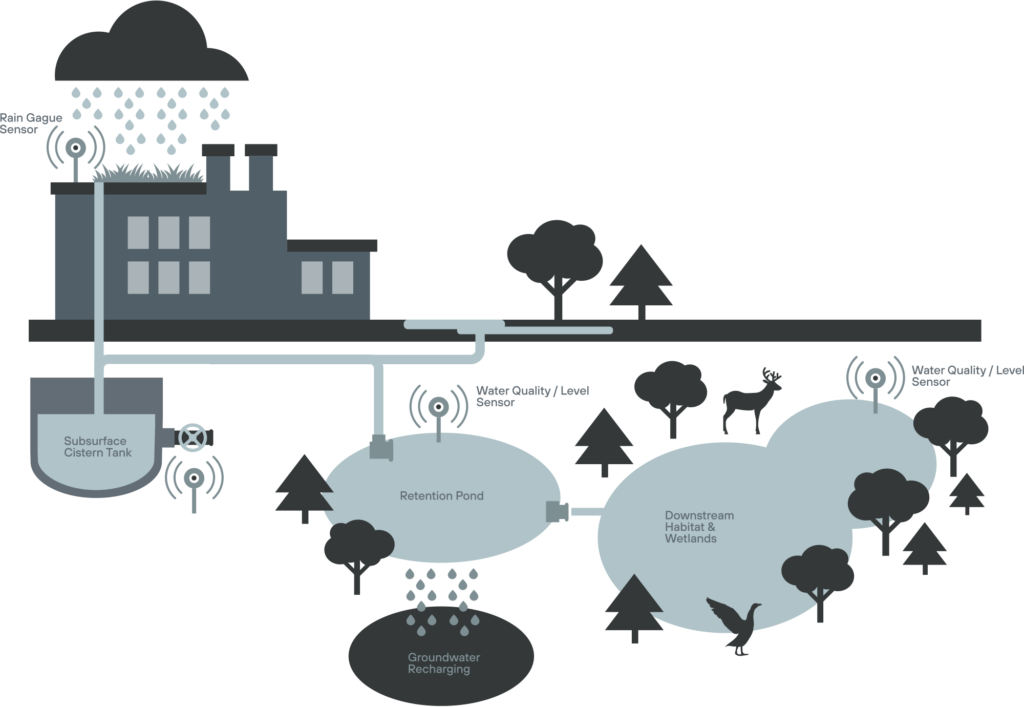Why Urban Runoff?
Water is life. When poorly managed, it’s a liability.
Addressing urban runoff, or stormwater, is typically a key consideration for large landowners, corporate water programs, or governments that desire to improve their water stewardship or that have commitments or regulatory obligations to improve water quality. And urban runoff typically goes hand-in-hand with water infrastructure upgrades or decisions regarding new infrastructure. This is why one of our primary focus areas is urban runoff—to help our clients better understand and mitigate its impacts and harness its potential.
When rain falls on rooftops, pavement, or other “impervious surfaces,” it can’t easily soak into the ground or flow slowly across natural landscapes, both of which act as filters for pollutants.
Most municipal stormwater systems were designed to move rainfall quickly away from people and property. This approach often creates downstream flooding, producing runoff filled with pesticides, bacteria, heavy metals, too much sediment, and excess nutrients that can spawn toxic algae growths, which threatens critical aquatic ecosystems and drinking water supplies. And, during heavy rains, runoff can flow into combined wastewater treatment plants, sending raw sewage into our precious water resources.
When water is hindered from soaking into the ground, so, too, is its ability to recharge at-risk, out-of-sight aquifers. This is concerning, as groundwater in the United States provides drinking water for about a third of the population and supplies some 37 percent of the water used in agriculture. It also makes up 30 percent of the surface flows in our streams, directly supporting a wide range of often rare biodiversity.
The Challenge
Urban runoff requires distributed solutions.
We can’t solve stormwater challenges by building more treatment plants. We can’t reengineer the entire urban and suburban landscape. Nor will regulation alone fix the problem.
That’s because solutions for urban runoff are only effective at scale.
In the U.S., at least 90 percent of the land in urban and suburban settings is privately owned. Government agencies are not typically equipped to partner with private landowners. Our expertise and trusted relationships make such connections possible.
How Brightstorm manages urban runoff more effectively

Urban runoff, or stormwater, exacerbates flood risk and is the only source of water pollution in the U.S. that’s increasing. Backed by real-time data, Brightstorm’s benefits are easy to quantify and verify.
Our staff have decades of experience designing and constructing stormwater projects, developing stormwater incentive programs and related policies at the municipal, state, and federal level, and supporting the development of stormwater technologies.
Brightstorm projects retrofitting stormwater retention ponds with smart technology deliver the following benefits:
- 15-60 million gallons of runoff treated annually per project.
- Up to 90% reduction in stormwater-related pollutants, which improves both water quality and downstream habitat.
- Increased flood capacity using existing assets at less than 50% of the cost to build new flood storage.
- Up to 75% reduction in peak flows and 50% reduction in erosive flows, both of which better mimic natural hydrology to improve water quality and enhance downstream habitat.

